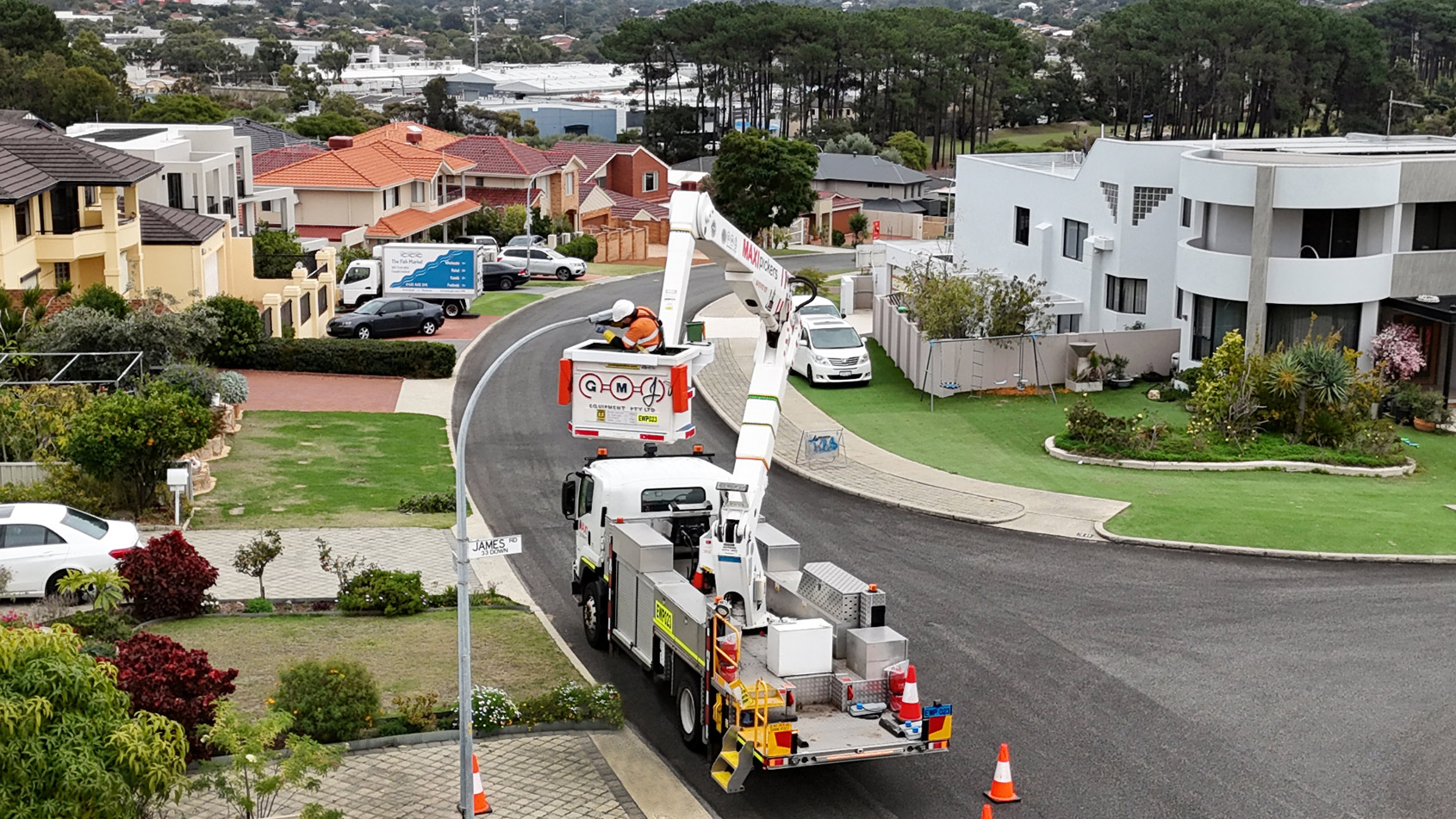FAQs
Light-emitting diodes (LEDs) are compound semi-conductor devices that produce visible light when an electrical current passes through them.
Streetlight faults are normally fixed within 5 working days in the metropolitan area and major regional centres (eg Kalgoorlie, Geraldton or Albany) and 9 working days in rural areas.
In most cases, we fix the fault on the day of inspection.
In areas where the power supply is underground, we've seen an increased number of cable faults. These faults are more complex to assess, locate and repair.
Basic cable faults can take up to 12 weeks to repair.
If cabling is non-compliant with standards, a full upgrade of the underground cable system is needed. Full upgrades can take months from design and engineering to planning and scheduling of cable laying.
New LED lighting may appear brighter compared to older streetlights, which is largely due to the decreasing performance and lower light output of older lights. Streetlight systems with LEDs are more focused, ensuring more of the light shines onto residential streets and public sidewalks with less light spill into adjacent areas. Western Power’s LED lights are warm white in their colour (3000K) which provides a balance between light effectiveness and amenity.
Western Power owns, operates, and maintains around 288,000 streetlights across its network, which are used to provide public lighting services to local governments.
Freeway and main arterial road lighting is installed and maintained by Main Roads WA.
Local governments and government agencies pay for public lighting. Street lighting tariffs are set by the State Government.
In lighting, Kelvin (K) refers to the colour temperature of light, i.e. how "warm" or "cool" the light appears. Lower Kelvin values (e.g., 2700K) indicate a warmer, yellowish light, while higher Kelvin values (e.g., 6500K) produce a cooler, bluish-white light.
Western Power’s LED lights are warm white in their colour (3000K) which provides a balance between light effectiveness and amenity.
The 4000K LED luminaires are neutral white in colour, and the 3000K LED luminaires are warm white in colour. Most of the other specifications are the same.
Western Power currently offers 16W, 28W, 43W and 140W LED streetlights through the LED Streetlight Program. Local governments will select the brightness of each streetlight being replaced with consideration to a streetlight’s height, location, road functionality, pedestrian use and security requirement.
Western Power also offers 70W and 165W LEDs through its Underground Power Program.
The streetlights are not wirelessly connected.
The blue dome housing on top of the light is a photocell, which can automatically turn an LED light on or off based on the amount of ambient light available.
No, there are no security components within the streetlight heads.
Western Power has dedicated disposal bins for the streetlight globes, which are disposed of according to requirements by our waste management provider.
Residents should request changes to streetlights by contacting their local government.
Residents concerned about glare from streetlights should contact their local government. Local governments are responsible for investigating streetlight glare and determining whether it is appropriate to install a glare limiting device (glareshield). The investigation usually includes assessment of a glare shield’s impact on lighting levels and public safety.
Older streetlights may have decreasing performance and lower light output. Please contact your local government, who can request replacing the current light with LED or change the wattage of an existing LED.
If a streetlight doesn't turn on, turn off or flickers, let us know using our streetlight reporting tool
Streetlight faults are normally fixed within five working days in the metropolitan area and major regional centres (e.g. Kalgoorlie, Geraldton or Albany) and nine working days in rural areas. In most cases, we fix the fault on the day of inspection.
Cable faults in areas of underground power are more complex to assess, locate and repair.
Basic cable faults can take up to 12 weeks to repair.
If cabling is non-compliant with standards, a full upgrade of the underground cable system is needed. Full upgrades can take months from design and engineering to planning and scheduling of cable laying.
